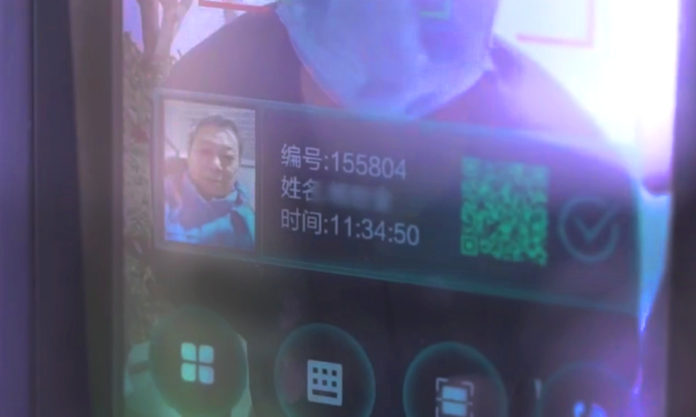Ever had a heavy bag of shopping in each hand and the need for a third hand to present your health code to enter your compound? Yes, just going home has become a right royal pain in Nanjing of late. Not anymore for some, and hopefully, soon us all.
Recently, residential communities in Nanjing have been installing facial scanners at their entry points. But upon seeing the new devices at the gate of this correspondent’s residence, an inquiry was met with, “It’s not working yet”.
That was a a couple of months ago, before everything went pear shaped again. Now though, another compound has put the scanners into operation. And with their full purpose now clear, for residents therein, they are nothing less than a gift from the gods.
Facial recognition technology (FRT) in China, however, got itself a bad rap in the beginning. As long ago as 2017, this publication reported on cameras at intersections in downtown Nanjing installed to spot and fine jaywalkers. Images of their offence displayed on large LED screens nearby also served as a “name and shame” deterrent.
Later, FRT was being used to verify students’ identities at school gates and even to monitor their facial expressions in class. Any who looked bored would be in for a spot of detention. And at the end of last year, The Nanjinger revealed that our city had put speaking street lamps into operation, capable of admonishing ebike riders for not wearing a helmet, and other undesirable behaviour.
The accusations that the Middle Kingdom soon received for being a sinister Big Brother were perhaps deserved. Time therefore for some better news.
While we’ve been able for a while to use FRT to unlock our phones, pay for things, go to the office and get on trains, only now has it been united with our not-so-beloved health code.
For the residents of Dijing Sunshine Residential Community in Nanjing’s Jiangbei New Area can now simply use their faces to open the gate of their community, but only after the system has also checked their health code status. It also even takes their temperature.
Wang Lei works for the smart community service centre which made the system a reality. Pointing out that it is a lot of work to extrapolate the data from two completely unrelated systems, Wang revealed their team took only 3 days to get up and running. Under normal circumstances, at least 2 weeks would be needed for a project team to achieve such system upgrades.
Uniting the three checks is indeed a breakthrough. Reporters for the Yangtze Evening News have found that it takes an average of 30 seconds for anyone to now successfully enter their compound. And during the evening rush hour or when its raining, it’s downright frustrating.
The new system does the whole job in 5 seconds flat.









